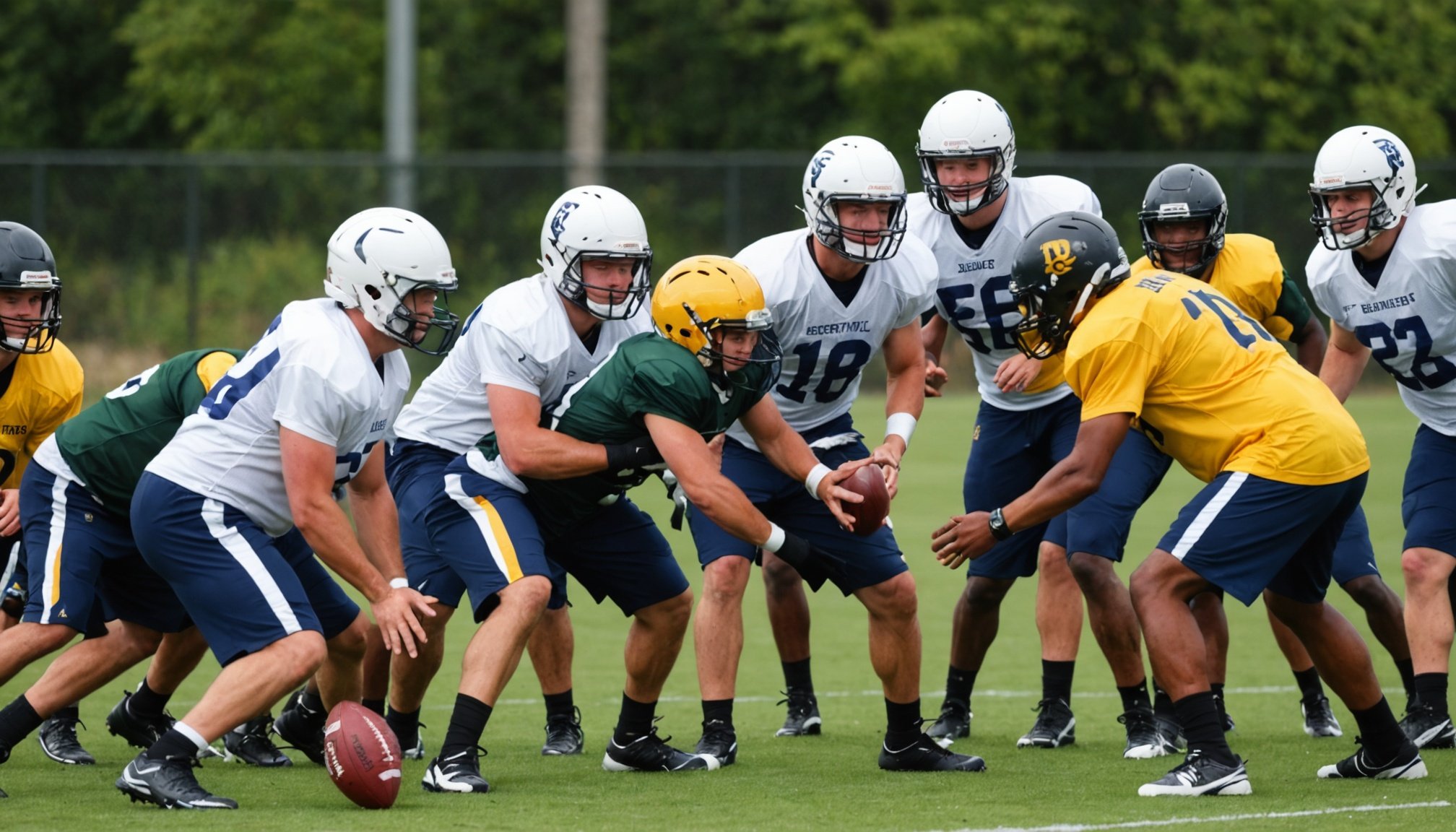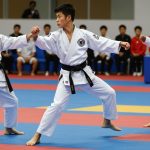Overview of an Effective Football Training Camp
Football training camps serve a crucial role in preparing athletes for the upcoming season. These camps are designed to strengthen both individual skills and team cohesion. By focusing on both physical and mental conditioning, camps aim to create well-rounded athletes ready to tackle any challenge on the field.
The core purpose of a football training camp is to provide a structured environment where players can improve their fitness, skills, and strategies. This structure is vital as it ensures each aspect of performance is addressed systematically, leaving no stone unturned in the pursuit of excellence. An effective camp utilises a variety of successful camp strategies to achieve these goals, such as targeted drills, tactical meetings, and diet monitoring.
This might interest you : Illuminating the Game: How Evening Artificial Lighting Influences Football Matches and Player Performance
Implementing a structured approach is indispensable for a successful training camp. A well-organised camp creates a disciplined atmosphere conducive to learning and development. This includes setting clear objectives, scheduling regular practice sessions, and enabling continuous feedback loops to track progress effectively.
Finally, the key objectives of such camps are to enhance team performance, improve communication skills, and foster a spirit of collaboration. This holistic approach not only boosts individual competence but also knits the team more closely together, ultimately leading to superior on-field performance.
Also read : Effective Tactics for Football Coaches to Boost Player Focus in Crunch Time of Matches
Scheduling and Planning
Creating an effective training schedule is instrumental for achieving optimal results in any athletic endeavor. The training timeline should clearly outline daily and weekly routines that athletes need to follow to enhance their performance.
Creating a Training Schedule
Designing a structured camp schedule begins with listing out goals and breaking them into achievable tasks. Start by outlining each phase of training: pre-season, in-season, and off-season. Each phase should have specific objectives tailored to the team or individual’s development needs. Having a detailed timeline helps track progress and adjust practices to meet targets effectively.
Balancing Intensity and Rest
It’s crucial to balance training intensity with adequate rest periods. Intense training requires recovery strategies such as incorporating rest days or lower-intensity workouts. These rest days are pivotal in preventing fatigue and injuries, allowing the body to repair and grow stronger.
Importance of Flexibility
While sticking to a training timeline is key, maintaining flexibility in schedules is also vital. Adapting practices based on unforeseen circumstances like weather changes, unexpected team dynamics, or injuries ensures the schedule remains realistic and supportive of athletes’ evolving needs. Addressing these changes promptly can make the difference between a schedule that hinders performance and one that enhances it.
Coaching Techniques
Incorporating coaching strategies that resonate with players can significantly enhance the learning experience. By focusing on effective drills tailored to different skill levels, coaches can ensure that each session is both productive and engaging.
Engaging Coaching Methods
A key aspect of coaching strategies is utilizing interactive training sessions that captivate and stimulate players. It’s essential to create an environment that motivates athletes to participate actively. Interactive drills, such as small-sided games and partner exercises, can help in maintaining players’ interest while focusing on specific skills.
Customizing Drills for Skill Levels
Tailoring drills to accommodate varying skill levels is crucial. Not all players learn at the same pace, and thus, drills must be adaptable. Coaches should assess individual and collective team strengths and weaknesses to design effective drills. This customization ensures each player receives the necessary attention and challenges to foster improvement.
Feedback Mechanisms
Open lines of communication are vital for progress. Implementing feedback mechanisms allows coaches to offer constructive criticism and encouragement. Regular one-on-one sessions or team meetings can be utilized to discuss performance, giving players the opportunity to voice their thoughts and improve their skills. Encouraging a culture of open communication enables athletes to be proactive in their development while enhancing the overall effectiveness of coaching strategies.
Nutrition and Hydration
For athletes, nutrition and hydration strategies are critical. Understanding how to effectively fuel and hydrate your body can make a significant difference in performance and endurance.
Pre-Camp Nutrition Planning
Prior to any training camp, establishing a solid nutrition plan is essential. Athlete nutrition should focus on a balanced diet that includes the right proportions of carbohydrates, proteins, and fats to support energy needs. The right nutrition ensures that athletes have the necessary energy reserves for intense physical activity. Early planning allows for more convenient meal preparation, reducing the stress during camp.
Hydration Best Practices
Staying properly hydrated is equally important. Implementing effective hydration strategies involves timing fluid intake before, during, and after training. Adequate hydration ensures optimal body function and helps prevent cramps and fatigue. Regularly sipping water and including electrolytes as needed can maintain proper fluid balance.
Nutritional Support During Camp
During camp, maintaining nutritional balance becomes increasingly important. Providing nutritional support helps sustain energy levels and aids recovery. Options for quick and effective meal prep minimize disruption to the training schedule while ensuring athletes receive nutrient-dense meals. Such practices are crucial for consistent performance and achieving training goals.
Team-Building Activities
Creating a cohesive team requires innovative approaches and participation in activities that foster open communication and understanding.
Outdoor Team Challenges
Outdoor activities are instrumental in building trust and team cohesion. These challenges encourage team members to collaborate and use collective problem-solving skills. Engaging in such tasks outside a traditional setting helps break down barriers and promotes reliance on each other in unfamiliar situations. It is an excellent opportunity for participants to identify individual strengths within the team, improving overall effectiveness and motivation.
Group Discussions for Growth
Facilitating meaningful group discussions plays a crucial role in encouraging vulnerability and sharing experiences. These conversations provide a supportive environment where team members can express personal insights and challenges. By understanding one another’s perspectives, teams can forge stronger connections, stimulating personal growth and team development.
Social Events Beyond Training
Social events extend the benefits of training, allowing team members to create camaraderie beyond professional boundaries. Such gatherings cultivate a relaxed atmosphere where teams can bond over shared interests and experiences without the pressure of work tasks. These events help strengthen interpersonal relationships, which in turn benefit team dynamics and performance. Together, these activities create a robust foundation for a thriving team culture.
Facilities and Equipment
Fulfilling your passion for training starts with quality training facilities and essential gear. These components play a crucial role in achieving optimal results.
Assessing Facility Needs
First, identify what type of training you wish to conduct. Different activities require specific spaces. For instance, weightlifting requires a strong, supportive floor, whereas agility training needs open, flexible areas. Evaluating these needs ensures that the facilities align with users’ objectives and prevent accidents.
Importance of Quality Equipment
Quality equipment is non-negotiable. It not only enhances performance but also adds longevity to the infrastructure. Ensure that all equipment is thoroughly tested and maintained. Investing in reliable and durable gear sets the foundation for effective training routines. Quality is distinct from cost; assess reviews and certifications to select the best.
Safety Considerations
Safety is paramount in any training environment. Regular safety checks catch potential hazards early, reducing injury risks. Ensure equipment meets safety standards and protocols are adhered to. Facilities should have clear emergency guidelines visible to all. By focusing on these safety elements, users can train confidently and effectively without apprehension.
Safety Measures and Risk Management
In football, prioritising injury prevention is crucial. By understanding common injuries, teams can focus on educating players and staff about the importance of safety protocols. Proper measures not only enhance player welfare but also contribute to a successful season.
Assessing Injuries and Recovery
Effective injury assessment is paramount. Coaches and medical staff must swiftly identify issues and start recovery plans. This includes understanding the severity, devising a treatment approach, and monitoring the player’s progress. Swift action minimises downtime and ensures a safer return to play.
Implementing Safety Protocols
Safety protocols are the backbone of injury prevention. Establishing structured guidelines ensures all team members are aware of their roles in maintaining safety. Regular training sessions on equipment usage, rule adherence, and environment checks help in reducing mishaps. Such protocols foster a culture prioritising player safety.
Emergency Procedures
In the event of an emergency, having a well-defined response plan is essential. Teams should conduct regular drills and make sure everyone understands their responsibilities. Quick and accurate responses can make a significant difference in outcomes. By preparing for common football injuries, teams can handle such scenarios effectively, ensuring players receive optimal care swiftly.
Success Stories and Expert Tips
Inspiring success often starts with learning from others who have paved the way. Discovering real-world examples through case studies can provide actionable insights for both novice and seasoned camp leaders.
Case Studies of Successful Camps
Case studies of successful training camps highlight the strategies that lead to successful outcomes. Investigating various training environments, experts offer advice on structuring programs that maximise athletic performance. For instance, integrating sports science with traditional coaching techniques has transformed ordinary camps into forerunners of innovation.
Testimonials from Coaches and Players
Coaches and players consistently provide inspiring testimonials that validate expert strategies. These personal stories offer insight into the real-world application of training theories. Players often emphasise the encouragement and motivation they receive, contributing to not just skills, but personal development. First-hand accounts illustrate how a supportive environment and expert guidance impact athletic and personal success.
Common Pitfalls and How to Avoid Them
Awareness of common pitfalls is crucial. Mistakes like ignoring individual athlete needs or neglecting rest periods can hinder progress. Expert advice recommends tailoring programs to individual capabilities and incorporating adequate recovery time. Learning from past errors fosters growth, turning potential failures into future successes. Practical tips guide camp leaders on navigating obstacles, ensuring a conducive environment for athletic development.
Actionable Checklists
Preparation and routine are vital for a successful camp experience. Utilising actionable checklists can greatly streamline the process and ensure nothing is overlooked.
Pre-Camp Preparation Checklist
Start by gathering all necessary camp preparation resources, including packing essentials, camp schedules, and personal documentation. Look into training resources relevant to camp activities to ensure a competitive edge. Plan for contingencies by organising travel arrangements, health information, and emergency contacts. Set aside time to acclimate to the camp routine by practicing training regimens at least two weeks before departure.
Daily Training Checklist
Once at camp, maintain focus on daily performance and well-being. Begin with a dynamic warm-up to prevent injuries and boost energy levels. Set clear, achievable goals for each training session, allowing room for improvement and adaptation. Ensure to stay hydrated and rest adequately to sustain optimal performance. Reflect on daily outcomes to identify strengths and areas for improvement, always aligning with broader camp objectives.
Post-Camp Evaluation
Conduct a thorough evaluation once camp concludes. Revisit initial goals set during camp preparation, determining accomplishments and areas that need further attention. Seek feedback from peers and mentors to gain diverse insights. Compile lessons learnt into a comprehensive report for future camp endeavors, marking a roadmap for progress and honing skills further.











